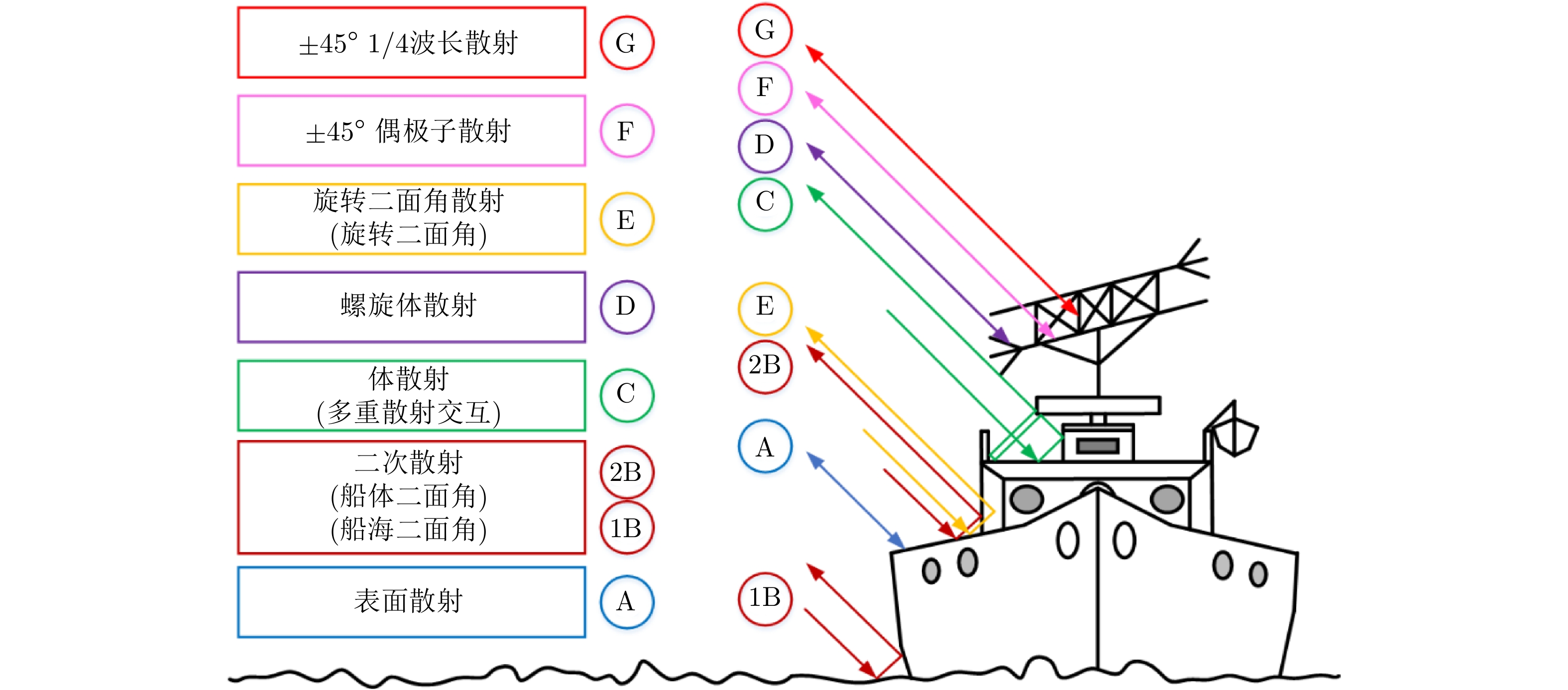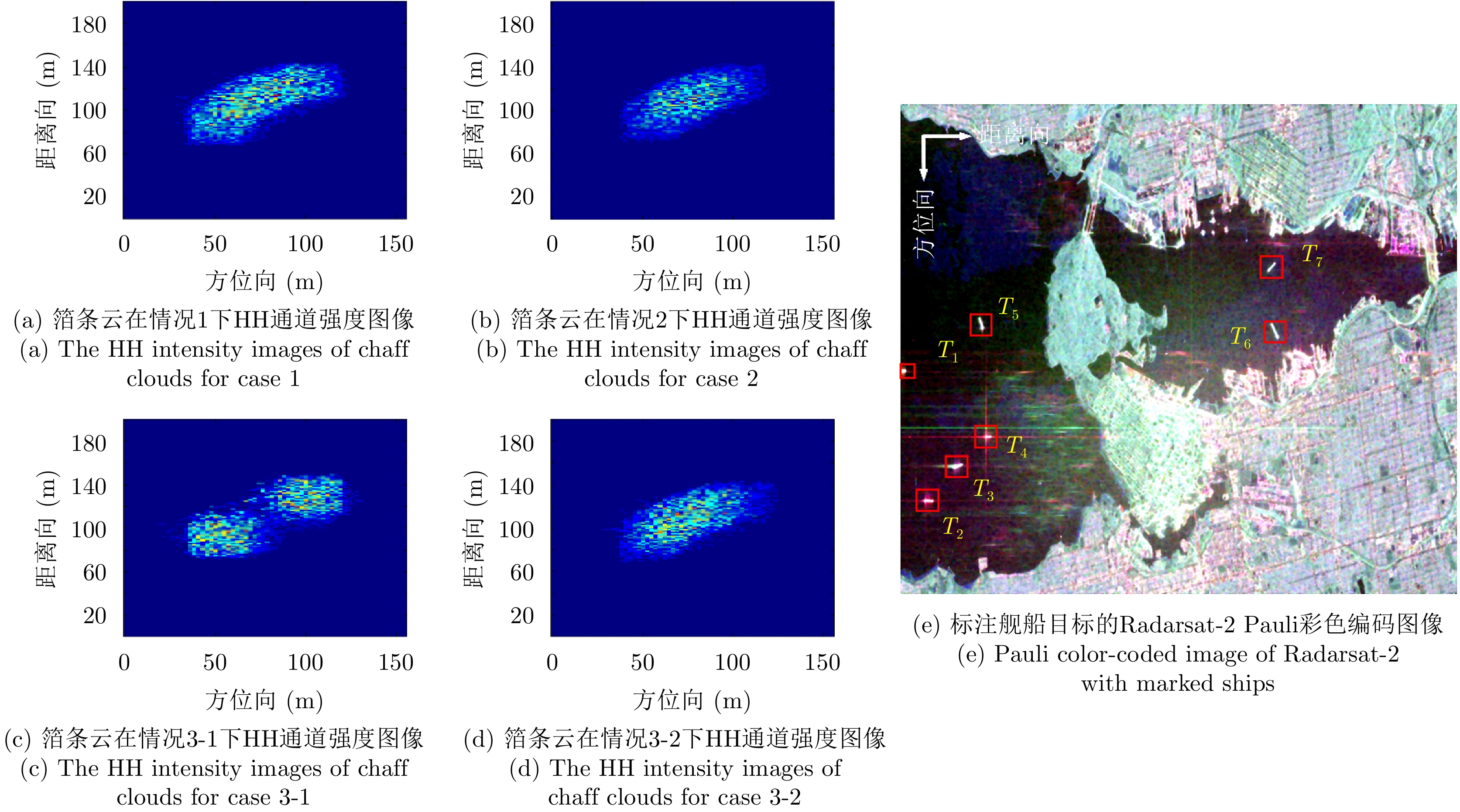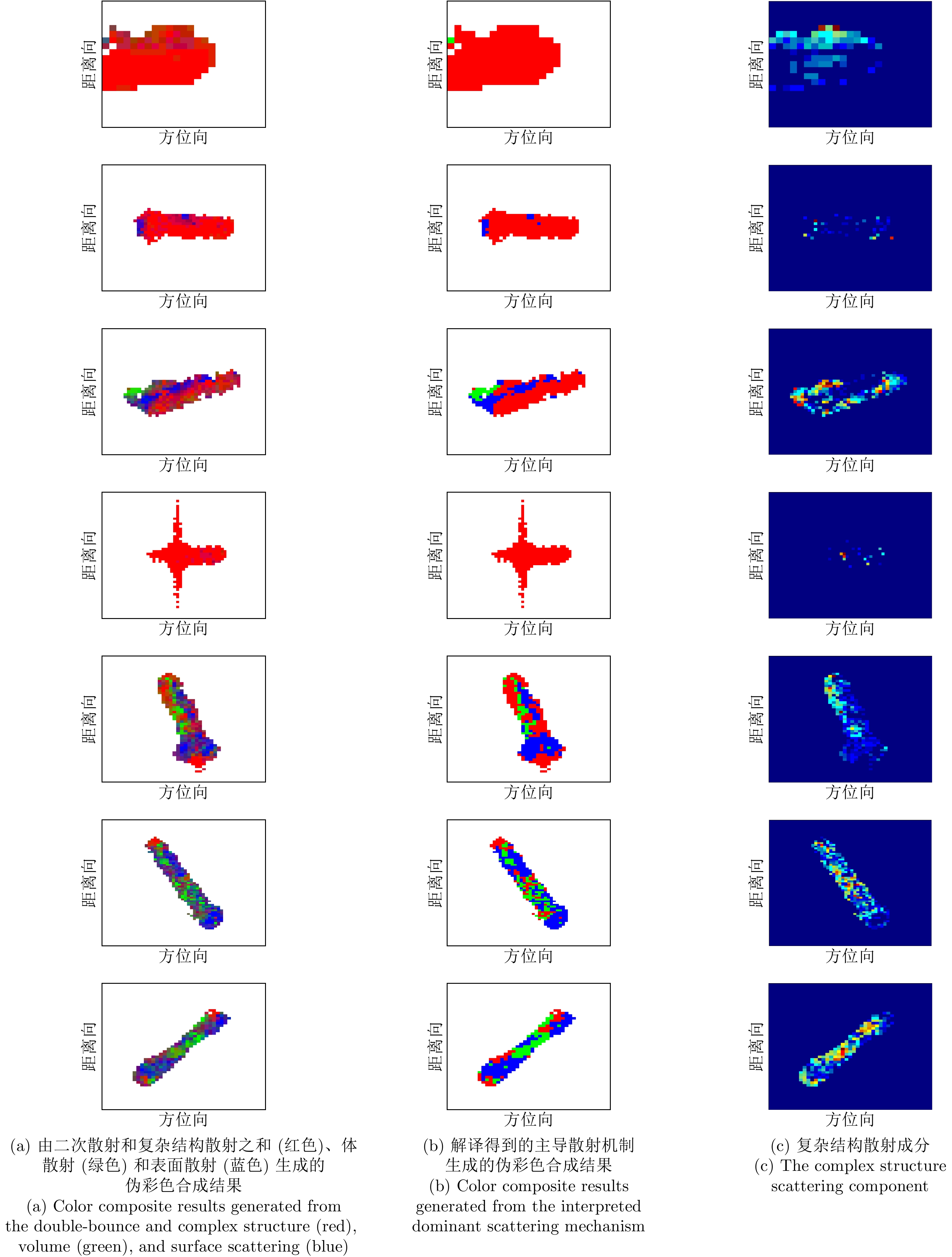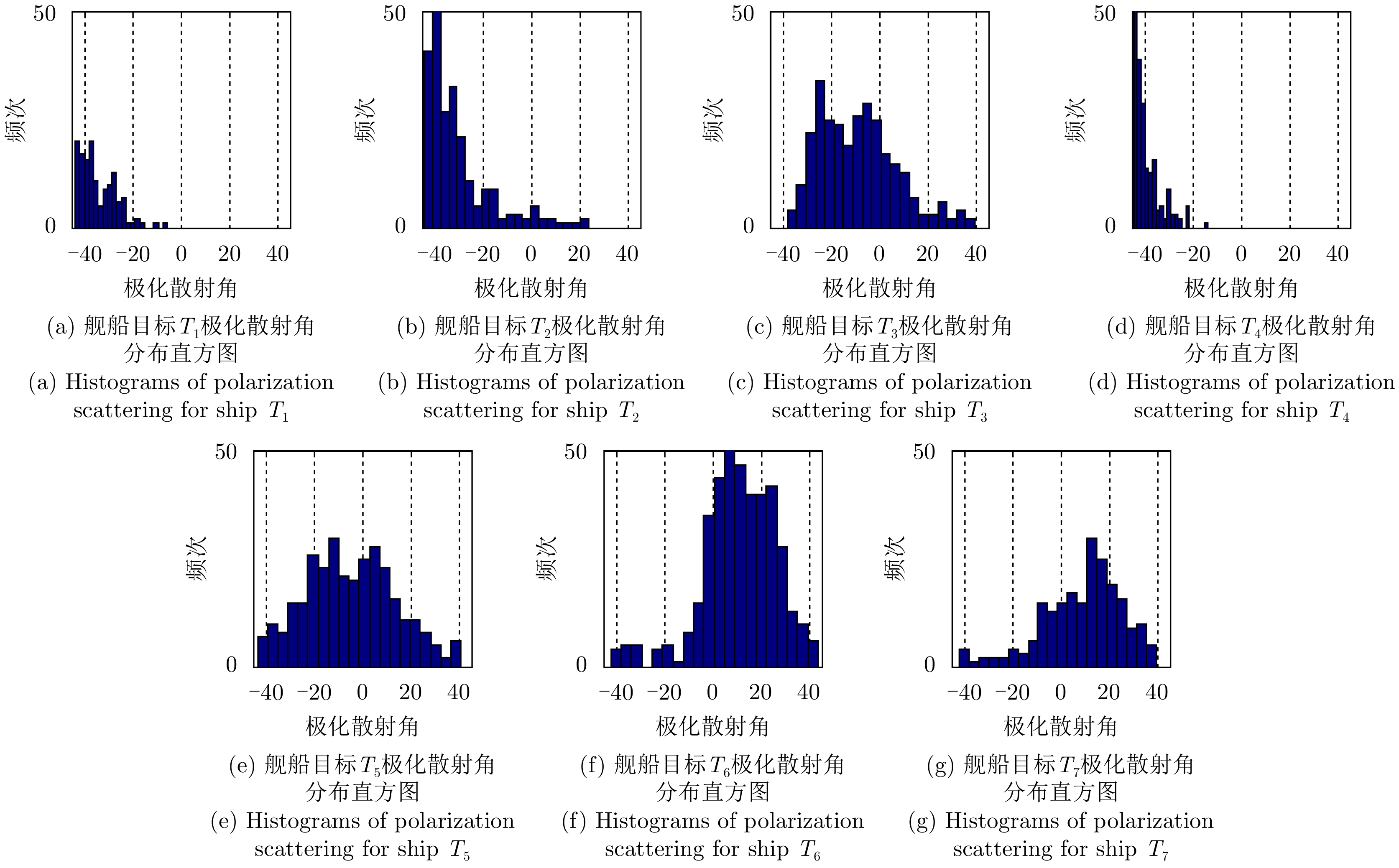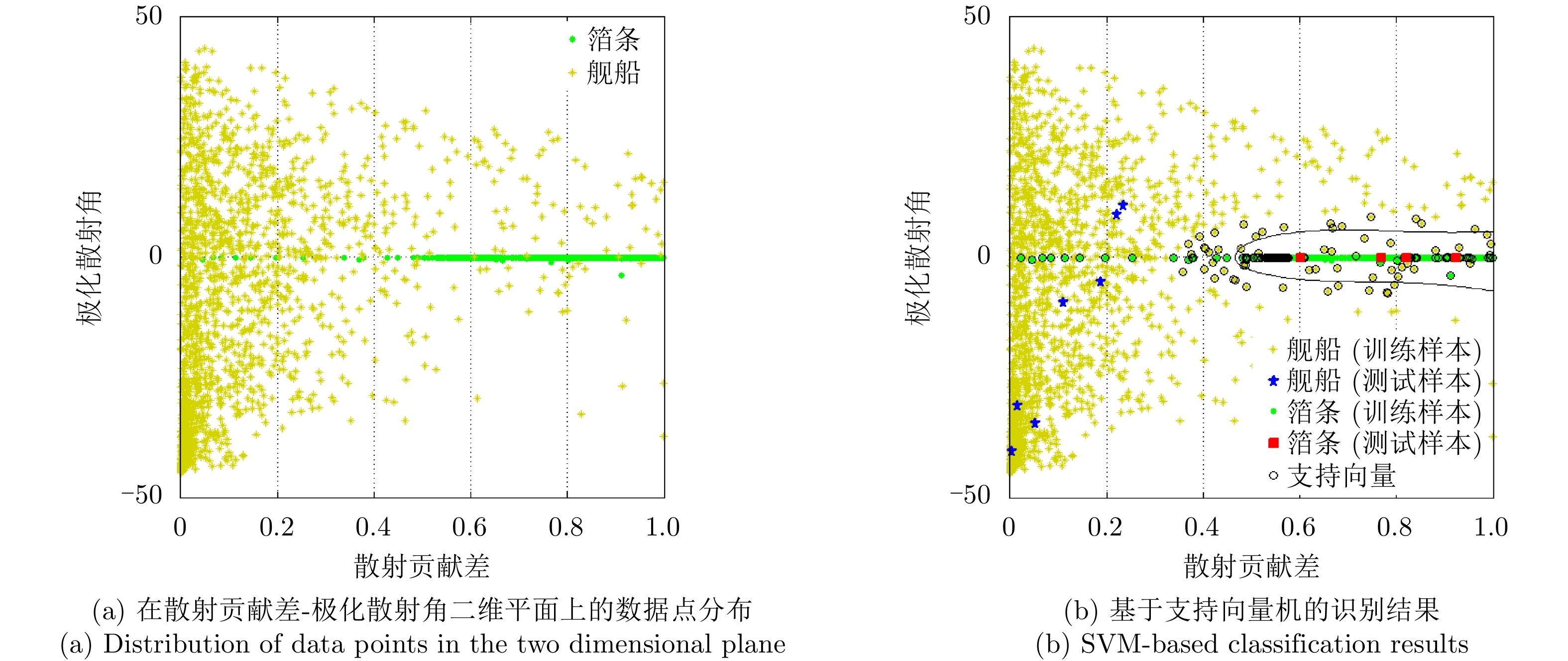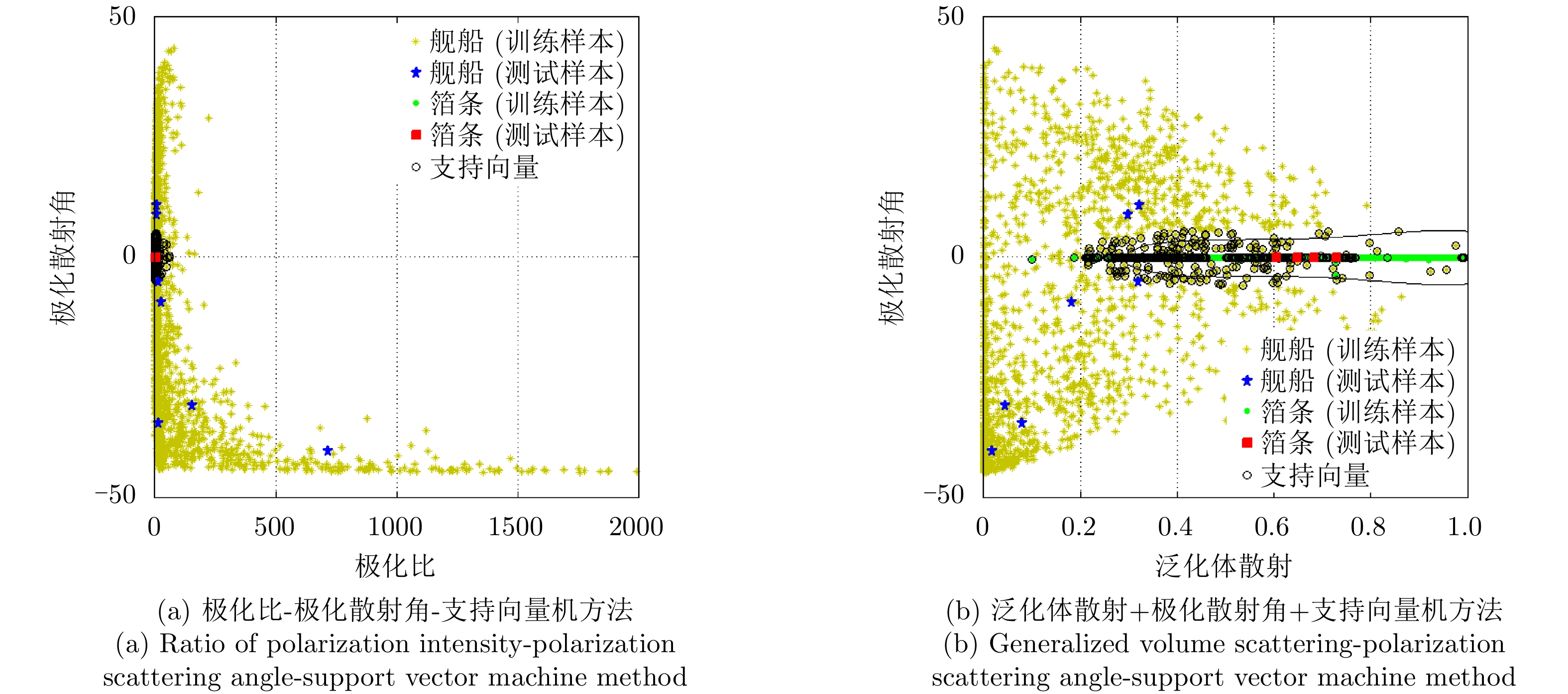| [1] |
陈静. 雷达箔条干扰原理[M]. 北京: 国防工业出版社, 2007.
CHEN Jing. Principles of Radar Chaff Jamming[M]. Beijing: National Defense Industry Press, 2007.
|
| [2] |
MARCUS S W. Dynamics and radar cross section density of chaff clouds[J]. IEEE Transactions on Aerospace and Electronic Systems, 2004, 40(1): 93–102. doi: 10.1109/TAES.2004.1292145 |
| [3] |
BENDAYAN M and GARCIA A. Signal modeling of chaff in naval environment simulation[J]. IEEE Transactions on Aerospace and Electronic Systems, 2015, 51(4): 3161–3166. doi: 10.1109/TAES.2015.140922 |
| [4] |
SEO D W, LEE J H, LEE H S, et al. Estimation of incoherent scattered field by multiple scatterers in random media[J]. ETRI Journal, 2016, 38(1): 141–148. doi: 10.4218/etrij.16.0114.1237 |
| [5] |
张杰, 张晰, 范陈清, 等. 极化SAR在海洋探测中的应用与探讨[J]. 雷达学报, 2016, 5(6): 596–606. doi: 10.12000/JR16124ZHANG Jie, ZHANG Xi, FAN Chenqing, et al. Discussion on application of polarimetric synthetic aperture radar in marine surveillance[J]. Journal of Radars, 2016, 5(6): 596–606. doi: 10.12000/JR16124 |
| [6] |
代大海, 廖斌, 肖顺平, 等. 雷达极化信息获取与处理的研究进展[J]. 雷达学报, 2016, 5(2): 143–155. doi: 10.12000/JR15103DAI Dahai, LIAO Bin, XIAO Shunping, et al. Advancements on radar polarization information acquisition and processing[J]. Journal of Radars, 2016, 5(2): 143–155. doi: 10.12000/JR15103 |
| [7] |
赵春雷, 王亚梁, 阳云龙, 等. 雷达极化信息获取及极化信号处理技术研究综述[J]. 雷达学报, 2016, 5(6): 620–638. doi: 10.12000/JR16092ZHAO Chunlei, WANG Yaliang, YANG Yunlong, et al. Review of radar polarization information acquisition and polarimetric signal processing techniques[J]. Journal of Radars, 2016, 5(6): 620–638. doi: 10.12000/JR16092 |
| [8] |
YANG Jianyu. Multi-directional evolution trend and law analysis of radar ground imaging technology[J]. Journal of Radars, 2019, 8(6): 669–693. doi: 10.12000/JR19099 |
| [9] |
王雪松, 陈思伟. 合成孔径雷达极化成像解译识别技术的进展与展望[J]. 雷达学报, 2020, 9(2): 259–276. doi: 10.12000/JR19109WANG Xuesong and CHEN Siwei. Polarimetric synthetic aperture radar interpretation and recognition: Advances and perspectives[J]. Journal of Radars, 2020, 9(2): 259–276. doi: 10.12000/JR19109 |
| [10] |
LI Yongzhen, LI Mianquan, CHENG Xu, et al. Summarization of radar polarization measurement modes[J]. Systems Engineering and Electronics, 2013, 35(9): 1873–1877. doi: 10.3969/j.issn.1001-506X.2013.09.12 |
| [11] |
陈世超, 高鹤婷, 罗丰. 基于极化联合特征的海面目标检测方法[J]. 雷达学报, 2020, 9(4): 664–673. doi: 10.12000/JR20072CHEN Shichao, GAO Heting, and LUO Feng. Target detection in sea clutter based on combined characteristics of polarization[J]. Journal of Radars, 2020, 9(4): 664–673. doi: 10.12000/JR20072 |
| [12] |
SHAO Xianhe, XUE Jinghong, and DU Hai. Theoretical analysis of polarization recognition between chaff cloud and ship[C]. 2007 International Workshop on Anti-Counterfeiting, Security and Identification, Xiamen, China, 2007: 125–129. doi: 10.1109/IWASID.2007.373711. |
| [13] |
SHAO Xianhe, DU Hai, and XUE Jinghong. A target recognition method based on non-Linear polarization transformation[C]. 2007 International Workshop on Anti-Counterfeiting, Security and Identification, Xiamen, China, 2007: 157–163. doi: 10.1109/IWASID.2007.373718. |
| [14] |
LI Xi, LIN Lianshan, and SHAO Xianhe. A target polarization recognition method for radar echoes[C]. 2010 International Conference on Microwave and Millimeter Wave Technology, Chengdu, China, 2010: 1644–1647. doi: 10.1109/ICMMT.2010.5524748. |
| [15] |
LI Jinliang, ZENG Yonghu, SHEN Xujian, et al. Modified polarization recognition method for chaff jamming[J]. Radar Science and Technology, 2015, 13(4): 350–355. doi: 10.3969/j.issn.1672-2337.2015.04.004 |
| [16] |
TANG B, LI H M, and SHENG X Q. Jamming recognition method based on the full polarisation scattering matrix of chaff clouds[J]. IET Microwaves, Antennas & Propagation, 2012, 6(13): 1451–1460. doi: 10.1049/iet-map.2012.0297 |
| [17] |
YANG Yong, XIAO Shunping, FENG Dejun, et al. Polarisation oblique projection for radar seeker tracking in chaff centroid jamming environment without prior knowledge[J]. IET Radar, Sonar & Navigation, 2014, 8(9): 1195–1202. doi: 10.1049/iet-rsn.2013.0388 |
| [18] |
CUI Gang, SHI Longfei, MA Jiazhi, et al. Identification of chaff interference based on polarization parameter measurement[C]. The 2017 13th IEEE International Conference on Electronic Measurement & Instruments, Yangzhou, China, 2017: 392–396. doi: 10.1109/ICEMI.2017.8265829. |
| [19] |
HU Shengliang, WU Lingang, ZHANG Jun, et al. Research on chaff jamming recognition technology of anti-ship missile based on radar target characteristics[C]. The 2019 12th International Conference on Intelligent Computation Technology and Automation, Xiangtan, China, 2019: 222–226. doi: 10.1109/ICICTA49267.2019.00054. |
| [20] |
CRISTIANINI N and SHAWE-TAYLOR J. An Introduction to Support Vector Machines and Other Kernel-based Learning Methods[M]. Cambridge: Cambridge University Press, 2000: 198–216.
|
| [21] |
FREEMAN A and DURDEN S L. A three-component scattering model for polarimetric SAR data[J]. IEEE Transactions on Geoscience and Remote Sensing, 1998, 36(3): 963–973. doi: 10.1109/36.673687 |
| [22] |
YAMAGUCHI Y, MORIYAMA T, ISHIDO M, et al. Four-component scattering model for polarimetric SAR image decomposition[J]. IEEE Transactions on Geoscience and Remote Sensing, 2005, 43(8): 1699–1706. doi: 10.1109/TGRS.2005.852084 |
| [23] |
QUAN Sinong, XIONG Boli, XIANG Deliang, et al. Scattering characterization of obliquely oriented buildings from PolSAR data using eigenvalue-related model[J]. Remote Sensing, 2019, 11(5): 581. doi: 10.3390/rs11050581 |
| [24] |
FAN Hui, QUAN Sinong, DAI Dahai, et al. Seven-component model-based decomposition for PolSAR data with sophisticated scattering models[J]. Remote Sensing, 2019, 11(23): 2802. doi: 10.3390/rs11232802 |
| [25] |
SINGH G and YAMAGUCHI Y. Model-based six-component scattering matrix power decomposition[J]. IEEE Transactions on Geoscience and Remote Sensing, 2018, 56(10): 5687–5704. doi: 10.1109/TGRS.2018.2824322 |
| [26] |
QUAN Sinong, XIANG Deliang, XIONG Boli, et al. A hierarchical extension of general four-component scattering power decomposition[J]. Remote Sensing, 2017, 9(8): 856. doi: 10.3390/rs9080856 |
| [27] |
QUAN Sinong, XIONG Boli, XIANG Deliang, et al. Derivation of the orientation parameters in built-up areas: With application to model-based decomposition[J]. IEEE Transactions on Geoscience and Remote Sensing, 2018, 56(8): 4714–4730. doi: 10.1109/TGRS.2018.2835513 |
| [28] |
YAJIMA Y, YAMAGUCHI Y, SATO R, et al. POLSAR image analysis of wetlands using a modified four-component scattering power decomposition[J]. IEEE Transactions on Geoscience and Remote Sensing, 2008, 46(6): 1667–1673. doi: 10.1109/TGRS.2008.916326 |
| [29] |
SATO A, YAMAGUCHI Y, SINGH G, et al. Four-component scattering power decomposition with extended volume scattering model[J]. IEEE Geoscience and Remote Sensing Letters, 2012, 9(2): 166–170. doi: 10.1109/lgrs.2011.2162935 |
| [30] |
QUAN Sinong, XIONG Boli, XIANG Deliang, et al. Eigenvalue-based urban area extraction using polarimetric SAR data[J]. IEEE Journal of Selected Topics in Applied Earth Observations and Remote Sensing, 2018, 11(2): 458–471. doi: 10.1109/JSTARS.2017.2787591 |
| [31] |
LIU Yemin, XING Shiqi, LI Yongzhen, et al. Jamming recognition method based on the polarisation scattering characteristics of chaff clouds[J]. IET Radar, Sonar & Navigation, 2017, 11(11): 1689–1699. doi: 10.1049/iet-rsn.2017.0121 |
| [32] |
CHEN Siwei, WANG Xuesong, XIAO Shunping, et al. General polarimetric model-based decomposition for coherency matrix[J]. IEEE Transactions on Geoscience and Remote Sensing, 2014, 52(3): 1843–1855. doi: 10.1109/TGRS.2013.2255615 |




 Submit Manuscript
Submit Manuscript Peer Review
Peer Review Editor Work
Editor Work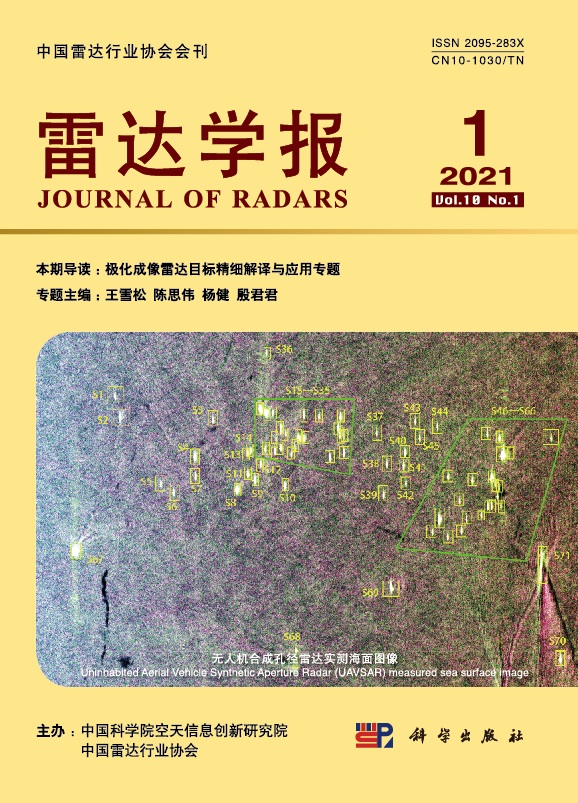

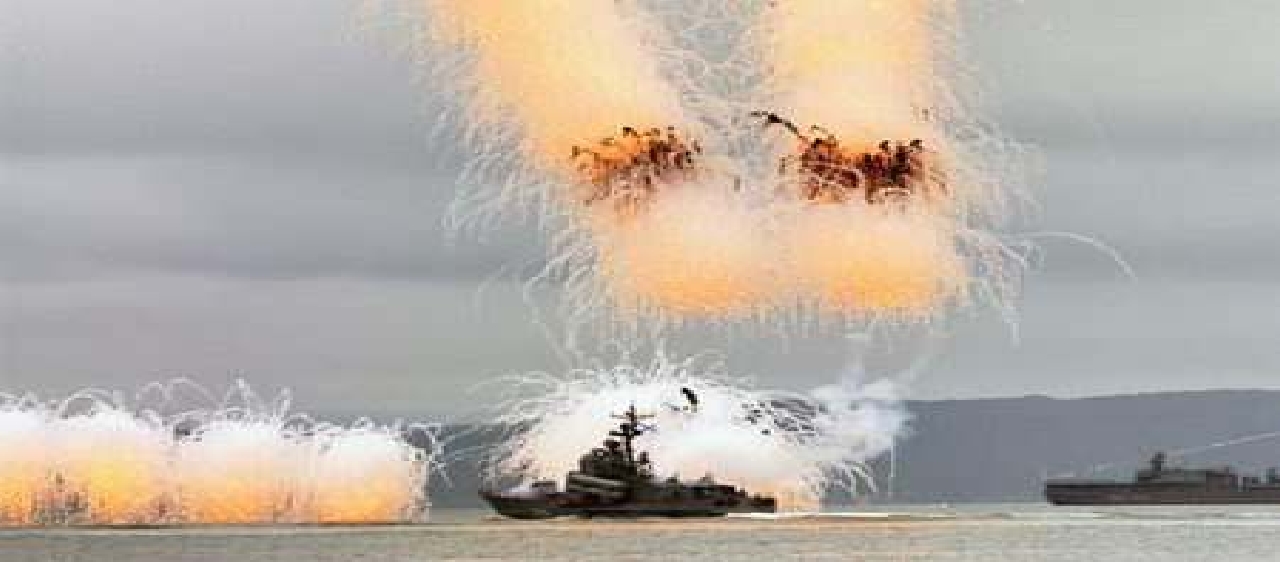



 DownLoad:
DownLoad:
